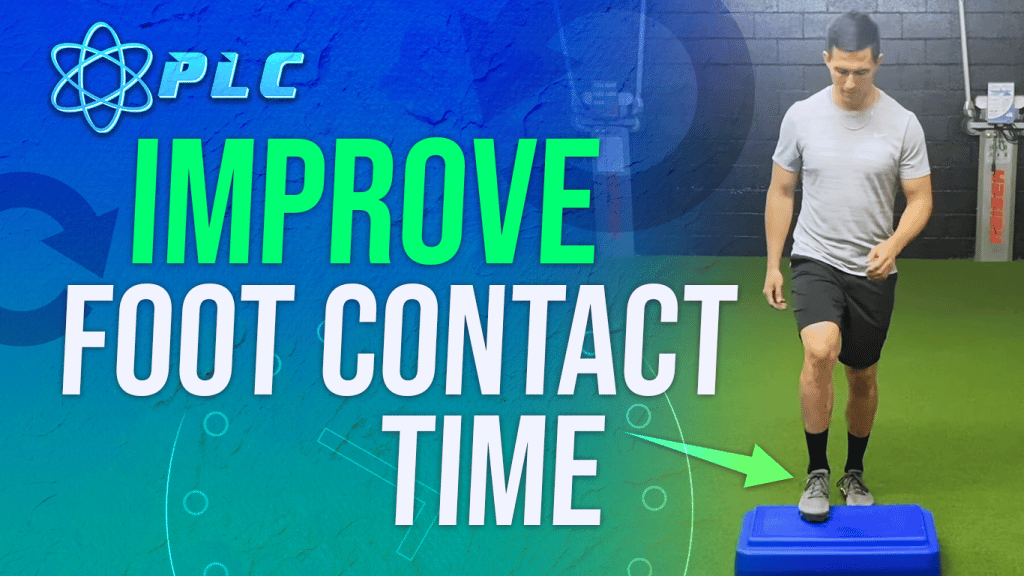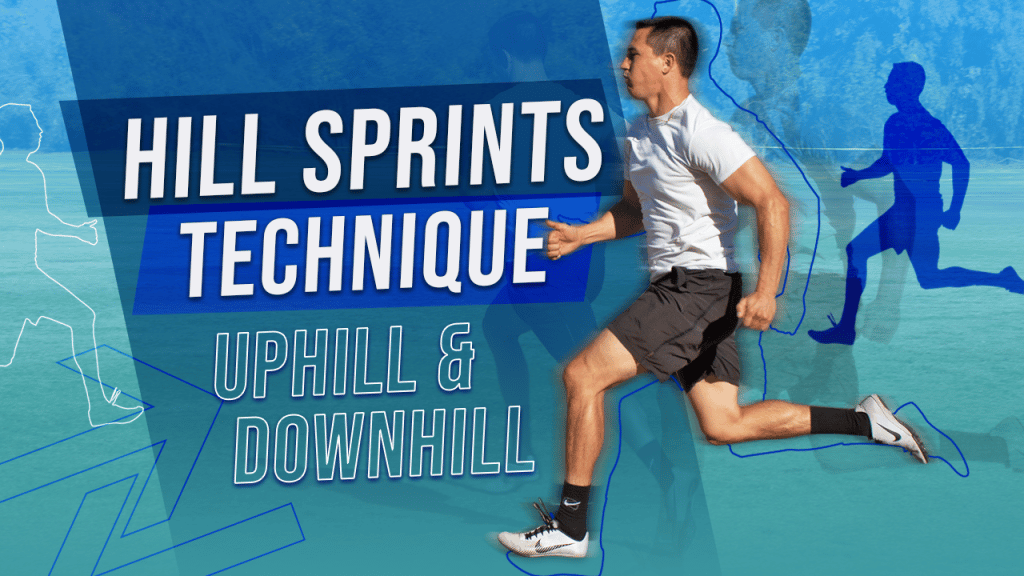How To Run Faster: Improve Foot Contact Time
May 26, 2023
When it comes to speed and developing athletes to run faster there is no one that thinks about it more than I do. Ever since going down this journey of finding the secrets of how to run faster there have been many great discoveries. The keys to how the foot hits the ground is amongst the most important.
Foot Strike
How you strike the ground is crucial in helping you push yourself off the ground. This post will delve deep into important factors in improving foot contact time, which will overall improve your speed and teach you how to run faster.
How You Start Is Critical To How You Finish
The first four steps are the most critical in your sprint. Right off the bat, you need to get your foot down as quickly as possible within your first step. You want to make sure your heel is not going too far inwards when your foot initially hits the ground; doing this will create an internal rotation, which makes it harder to maintain a neutral position. When your toes are outside the knee when landing the time on the ground is longer because of the absorption time. In comparison to when the toes are even with the knee or inside the knee when landing, the ankle and hip are now set up to absorb the force quickly and limit time on the ground.
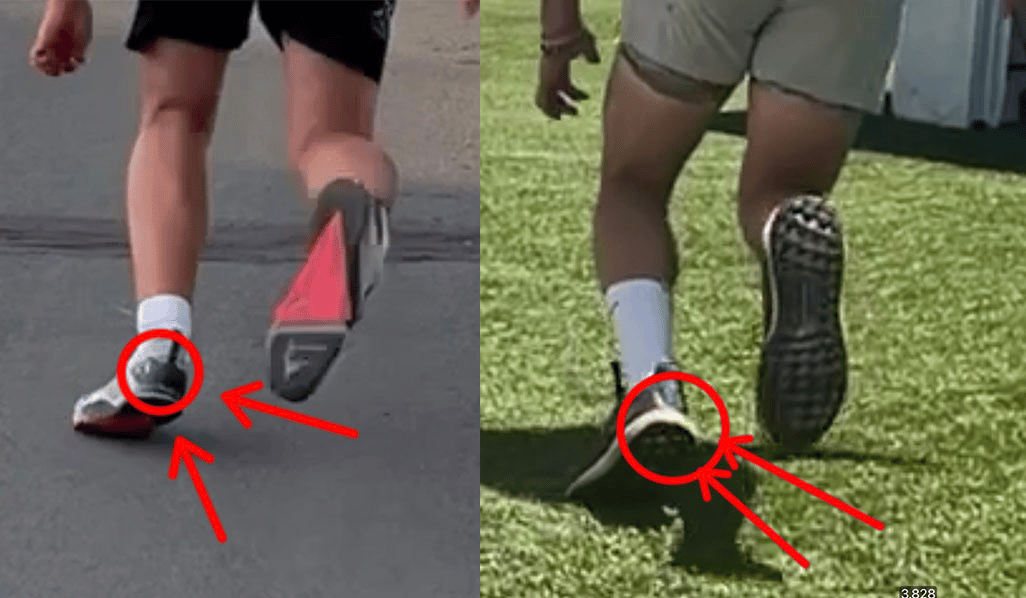
Heel position during landing is critical for great running performance and will create proper running form at top speed
Hip Alignment Determines Speed
When the foot is hitting the ground there needs to be a lot of control of alignment from the foot through to the hip. This means if the hips are turning open or are too internally or externally rotated it will have a big impact on running speed.
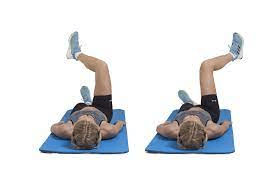
Make sure to add exercises to help achieve proper alignment into your training plan to increase your speed
Why How You Land Is So Important
When looking at the picture above of the woman lying on her back you can see the difference between hip internal rotation vs external rotation. With the different positions of the hip we can also see two very different position of the foot. While the foot/ankle move independently of the hip there are certain foot positions that are more easily achieved based on the position of the hip.
So How Does This Make You Run Faster
When it comes to running speed there is a direct correlation between ground force or the amount of force that is put into the ground, with overall speed. So when looking at the picture above you can see the athlete goes from very internally rotated with the hip while at max hip flexion or when the knee is at it’s highest point. To an externally rotated position when the foot hits the ground with more of the weight forward.
What Generates The Most Force?
Since we know that ground force is critical to increase your running speed. The question is what must be done in order to RUN FASTER. If you just stomp into the ground that will generate more force into the ground but will not help you propel forward and actually run faster.
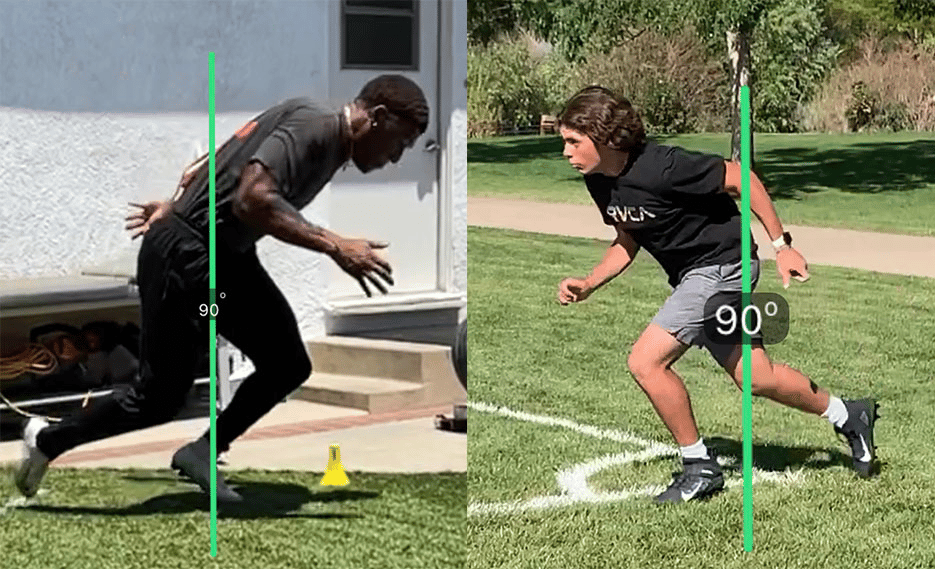
Be sure to practice starts in your running routine with a focus on leg turnover to get a faster pace
Land With The Foot Underneath The Hip
A key indicator to easily determine if the foot is striking the ground correctly is the position of the foot in comparison to the hip at contact. For both athletes above they are both taking their first step but we see two very different positions.
1. The athlete on the left is striking the ground with the foot directly underneath the hip.
2. Foot orientation, the athlete on the left is landing on the ball of the foot with the heel high and weight forward. In comparison to the athlete on the right where the athlete is landing in the middle of the foot, heel down and weight more back. (This will cause the foot to be on the ground much longer)
3. Shin angle, the shin angle makes a big difference in order to build speed. The athlete on the left has a downward facing shin in comparison to the athlete on the right where the shin is facing straight ahead.
4. Spine alignment, the position of the head, neck and spine make a huge impact when it comes to faster running. When the chin comes up and the spine rounds in comparison to keeping the chin tucked and the spine in a strong neutral position will make a tremendous difference in top end speed.
The Two Keys To How To Run Faster:
We will be getting deeper and deeper into how to actually achieve this but first just understanding the concept of 1. The quality of hip flexion, internal rotation and pelvis position and 2. The timing and ability to pull the leg back underneath the hip during foot contact.
At first those may seem complex but we have already gone into both of those above just did not explain it in that particular way. What is important when teaching, coaching or learning how to run faster is opening up the mind to what works best for the individual or for you. What connects with one athlete does not connect with all athletes so I try to explain the same or similar concepts in multiple different ways because we never know what will click and make the difference.
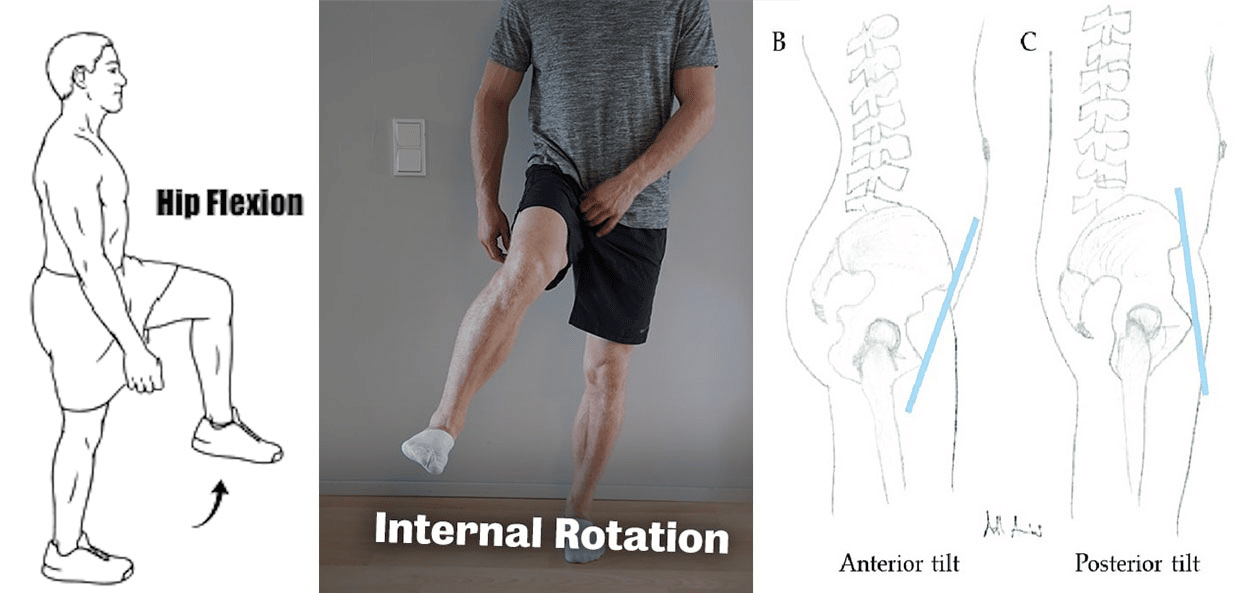
Having plenty of hip flexion and internal rotation is critical to run faster and generating more ground force
Quality of Hip Flexion, Internal Rotation and Pelvis Position
Each athlete is different when it comes to muscle strength, power, range of motion, coordination, limb length, etc. So there is no perfect position when combining hip flexion, internal rotation and pelvis position however there is an optimal position for you and I challenge you to find it.
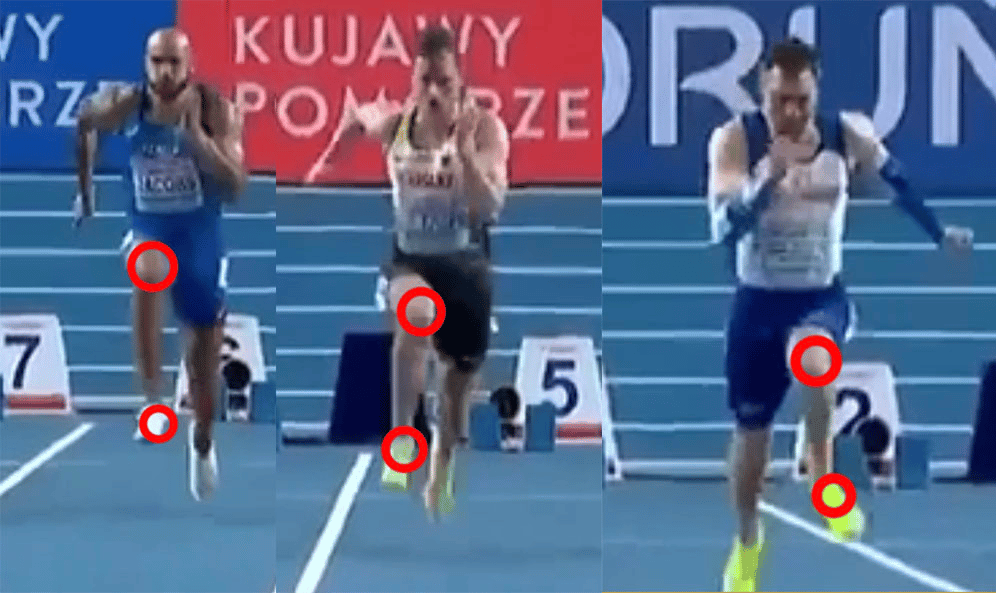
Here is an example of the European championships in the indoor 60 meters. So all of these guys are very fast. On the far left is Marcell Jacobs, the 2020 100m Olympic Champion and we can see his hip flexion and the amount of hip internal rotation he has. Then compare that to the other two athletes who have varying degrees of knee height and hip internal rotation. This is not to say one is better than the other but instead to show there are many differences based on size, timing, anatomy, etc.

How Pelvis Alignment Impacts Speed Training
In the picture above we can see the difference between the anterior pelvic tilt and posterior pelvic tilt. What is important to understand is our hips move through both of these in varying degrees when sprinting. When the knee is out in front of the body the hip is more posteriorly tilted (hip flexion) while the pelvis is in an anteriorly tilted position when the knee is behind the body (hip extension).
Therefore, the amount of hip flexion and hip extension we can achieve is dictated a lot on our pelvis alignment.
Because a more anterior pelvic tilt lends itself to better hip extension, there is times where athletes that are very fast actually have limited hip flexion capabilities. While some may have a more neutral pelvis and create excellent hip flexion and extension. The variations are infinite, the important thing is maximize force into the ground.
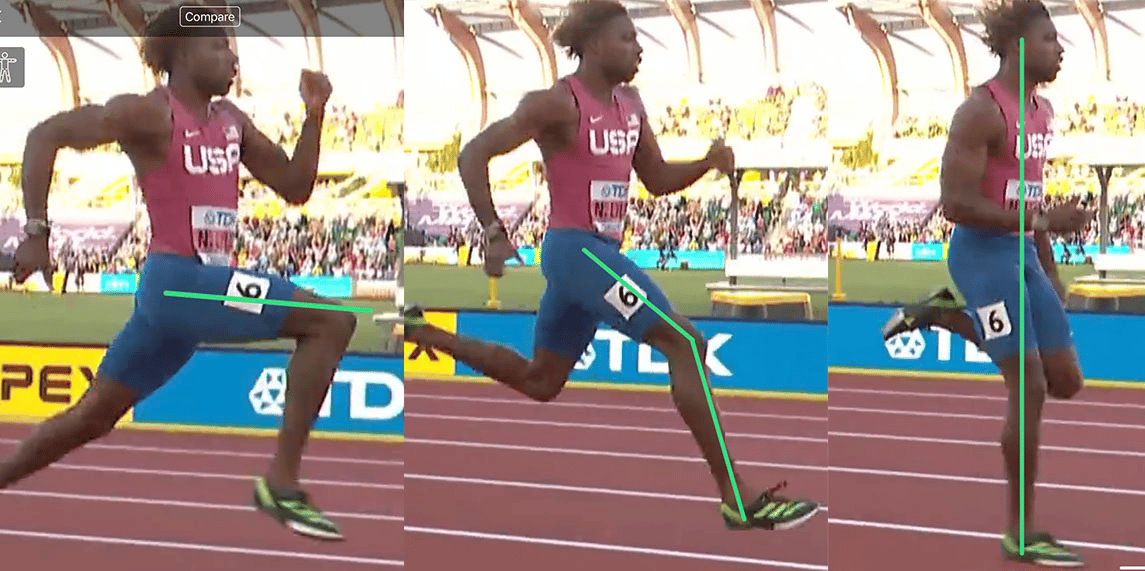
The Ability To Pull The Foot Underneath The Hip
Now that we have gotten into how to get into the correct hip position, we will go into the actual action of generating force into the ground. This comes from the ability to pull the foot back underneath the hip. We see Noah Lyles above who is the current 200m Olympic and World Champion showing excellent form.
In order to increase your speed you must learn how to contact the ground. When speed training on the track or doing strength training in the weight room there should always be a reminder of ‘how is my foot contacting the ground’. There are some great speed training workouts and drills to help you with this.
Drills to Improve Front Side Mechanics
Here are a few speed drills to help with your front side mechanics, foot contact as well as foot strike. These can be done before speed workouts and should be done at least 2-3 times a week in order to get the best results.
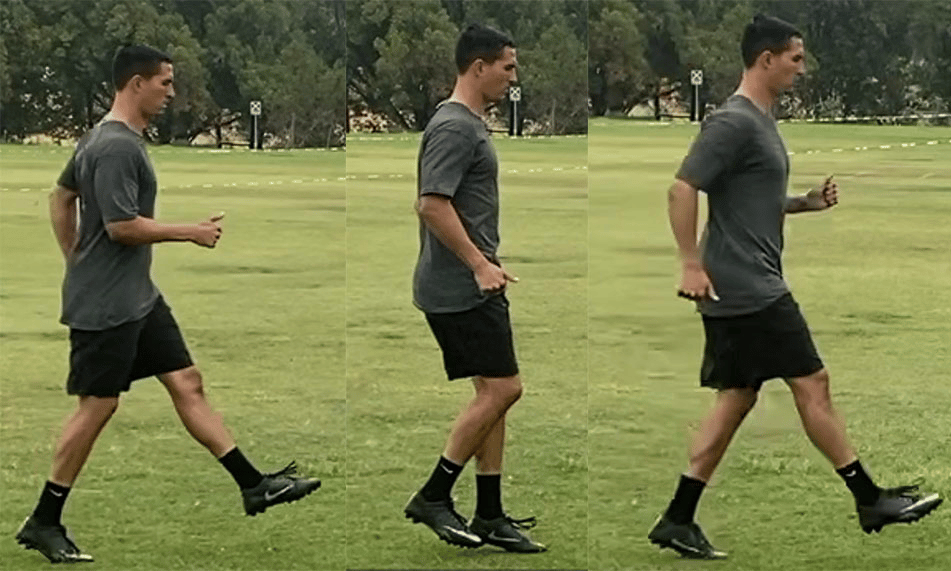
For all these plyometric exercises it is important to have consistent training
Straight Leg Run
Make sure to have arm action when doing this running form drill. Key thing here is toes up and keep the legs straight and you want to focus on pulling the leg back so it is landing right underneath the hip.
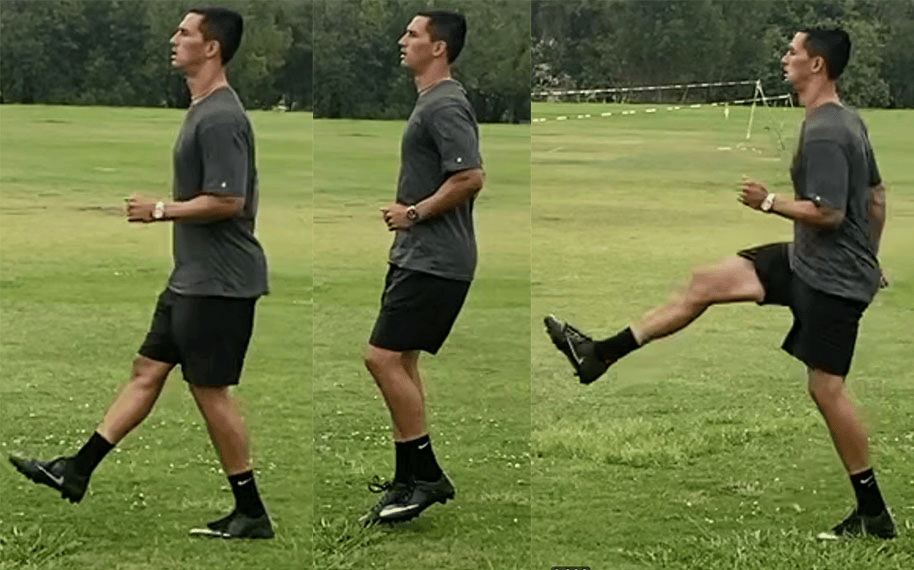
Incorporate the straight leg run into your running routine but be sure to maintain great stride length
Straight Leg Run With Leg Cycle
With this drill you start with the straight leg run. With every 3rd step you want to go through a full front side cycle. This drill helps build good form especially with front side mechanics. While doing this make sure to get the knee up as much as possible, then extend the knee, then pull the foot underneath the hip.

High knees are important in any training program to help with a faster running pace
High Knee Run
This is a good drill to help with getting the foot contact down where you can work getting the foot off the ground quickly when landing. Additionally, quickly driving the knees up and through to transition into the next step. When building speed it is important to understand that the ability to control your movement is critical to improve your speed.
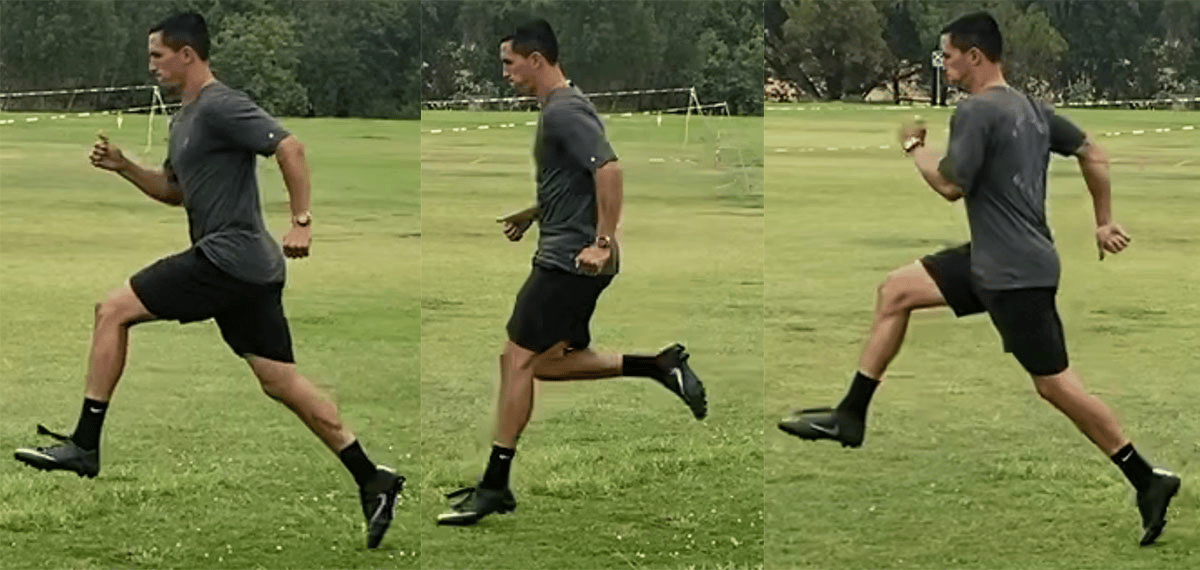
Bounds are one of my favorite exercises to increase your speed while improving lower body power. A great bodyweight exercise.
Bounds
This is another great exercise to help you run faster. The key here is staying light on your feet as well as getting the knees up in order to maximize the distance per step. This is considered a plyometric exercise which is really important to incorporate speed workouts.
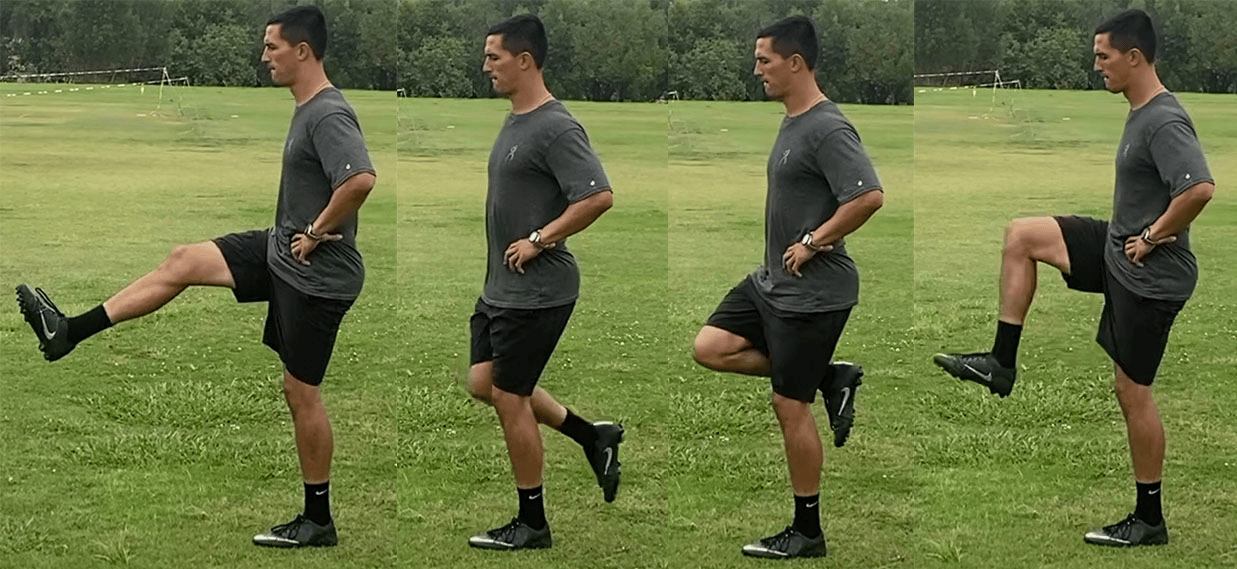
Maintain the same pace when doing these leg cycles.
Leg Cycles
I recommend having some support with this using a hand to stabilize on a wall, gate, etc. This is a very basic exercise when it comes to speed development but it is very under utilized when it comes to building great habits to improve how to run faster.
Speed Workouts To Improve Foot Contact Time
The biggest impact when it comes to foot contact time is usually in the start or the first 5-7 steps. We talked a lot about how to run faster from the start which ultimately will make a big difference when reaching top end speed.
There are a lot of different training workouts out there that go into speed and endurance improvement but not many that will help you improve the start. I tell athletes all the time, the fastest way to improve your speed is to fix your start.
Yes top end speed work is very important for athletes and sprinters to implement but there should be plenty of start focused training implement in your training plan. There are different options for this depending on your sport.
Track and Field
Depending on which race you compete in there are a vary amount of start positions to be training in. My assumption is most people reading this now are sprinters which means they will be starting from the block. My recommendation would be 3-5 days of block starts implement into your training schedule per week. More days when getting closer to a race and less days during the offseason.
Football
When training for football you want to incorporate speed play workouts into your training plan at least 2-3 days per week. This should mostly incorporate starts from your individual position such as wide receiver, running back, defensive or offensive line, etc. Additionally, implement some 40 yard dash starts out of a 3 point stance. The starts should isolate the first 3-5 steps.
Baseball And Softball
With the baseball and softball teams that I work with, the primary focus is on acceleration out of the batters box in addition to stealing or base running. So the speed play workouts include the first 5-7 steps from a lead off position to get faster on the base path. As well as fundamentals of getting out of the batters box to help you run faster.
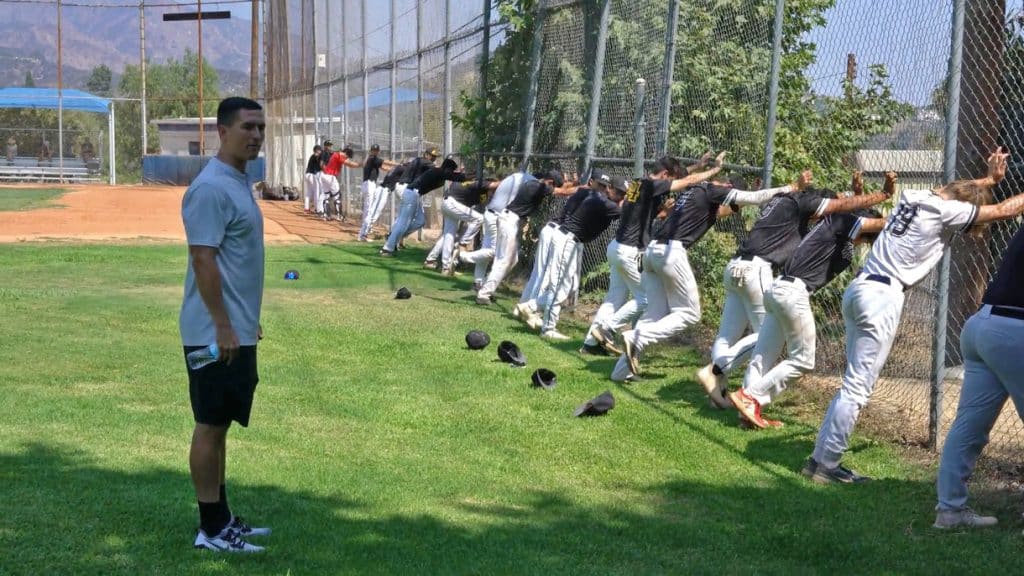
Soccer, Basketball, Lacrosse etc.
There are specifics with the 4 sports above because all of them are unique in the starting position. This is not to take away the importance of speed work from these sports as speed play is critical in pretty much all sports. It is just that training to improve in these sports are all fairly similar. The biggest thing is really reaction time and being able to accelerate and decelerate with great body alignment and positioning.
Interval Training
I am a big fan of interval training not only when it comes to running faster but with strength training, jump training, endurance, etc. This is where the concept of understanding the movements of the body is critical in all areas of life.
When you understand the importance of posture, walking, standing, working out and the impact it has on running faster you will see more benefits in your training immediately. The point of doing squats, deadlifts, jumps, etc. is to get faster. Therefore, interval training is great to implement when training how to run faster.
An easy example that I do all the time is a set of squats at around 70-75% for 6-8 reps followed by an immediate sprint on the curve treadmill. When training lower body I always do interval training and after every 3-4 exercises max I am back on the treadmill running so I can teach my brain what I want to use the muscles I am training to be able to achieve.
Strength Training
There is plenty of research out there that shows the direct correlation of strength development and how to run faster. These are not two independent segments but instead intertwined together.
When training how to run faster it is important to consider how much stress running or sprinting puts on the body. So it is important to incorporate rest days in order to prevent injuries. In many ways though strength training could be an excellent ways to incorporate improving areas that may be at risk of injury while also taking some load off the body.
Additionally, make sure to strengthen your core muscles. Not only are they critical when running faster but the primary role of core muscles is to stabilize the spine and pelvis. So by strengthening the core you are also prevent injuries to the lower back, hips and potentially even the lower body.
Listen To Your Body
Make sure when you are going through your workout routine you listen to your body. Speed training is really a long term achievement. If you are continually putting in high intensity workouts with little time for your body to rest, it will catch up with you. Additionally, sprinting is a max out effort so in order to actually run at your fastest the muscles need to be fully recovered. Make sure to consider the importance of rest when building a workout plan.
Hill Sprints
I am a huge fan of hill sprints when it comes to how to run faster. Not only is it great for running form it also is a great way to work on faster running. I recommend running down hill as opposed to up hill when training to get faster.
Running down hill will help the body optimize foot contact tempo and positioning in order to quickly accelerate off the ground. Be care when doing this and make sure the hill is only at about a 5-10% grade as the running pace will get very fast, very quick.
There are some benefits to up hill training when it comes to improving the start. Much of it will come from improving the hip position as well as hip power. As we talked about before when it comes to running faster the start is critical. So if your start is not very explosive I recommend some up hill training of the start in order to help overall explosiveness.
Running Pace or Running At A Slower Pace
When it comes to training how to run faster I recommend training at a higher intensity for shorter periods rather than longer distances or low intensity. Nothing against long distance training, just when it comes to running faster the more explosive the better for the muscles development. The more high intensity training with plenty of rest and recovery will have a greater long term impact in my opinion. It has been proven there is not much benefit from running at a slower pace during a speed workout.
There does seem to be value in tempo runs where the intensity changes during the actual rep. For instance, a great tempo runs workout especially when first getting started would be to sprint the straights and walk/slow job around the curves. This could be an excellent way of using tempo runs to improve your cardio as well as ability to hold/sustain top speed.
How Often Should You Train Per Week
This is different for everyone. Some people will benefit from more training sessions per week than others. Like we mentioned before it is important to consider recovery and rest when it comes to developing a workout schedule.
Find something that works for you though and challenge to try out new concepts and ideas. Some people workout longer per day for instance 90 minutes and workout 4-6 days per week. Or maybe getting in 2 45 minute workouts in a day is better for you so you get in 8-10 workouts per week. There are a ton of different workout routines available the key is finding what works best for your body.
I do recommend testing the workout routine you are implementing though to ensure you are getting the desired results. You do not want to implement something for 3-4 month and realize that it did not help you run faster. Even if you are testing the first 10 yards or 10 meters it is a way of making sure you are getting the desired results.
How Often Should You Test or Race
This is also dependent on the overall health of the athlete as well as the sport. Obviously for track and field many of the race days are already set so you know when you are going to be racing and when you need to be in top shape.
However for many other sports the testing, especially when it comes to speed is not as clearly defined. I recommend testing the start pretty often, especially when first beginning speed development. This could be as much as 2-3 times per week but as you get faster or the technique of the start becomes more of a habit then the consistent testing is not as important.
The top end speed such as a 40 yard dash or the 60 for baseball can be test every 8-12 weeks depending on the training level of the athlete. Many athletes go months or even an entire year without getting feedback. This is not advantageous when it comes to speed development and figuring out whether or not you are actually running faster.
Conclusion
There is plenty of information here to help you understand how to run faster right away and if I were you I would begin utilizing it right away. The journey to how to run faster will never go away and the abilities to improve are infinite. There will be ups and downs and the training will not always go the way you want it to. That is good, we need the bad times as well as the good times in order for it all to be truly worth while.
The more you test yourself and learn about you the better off you will be in the long run. Some people will be more natural at running than others and some may have the genetics in their muscles to achieve great results without great form. That is just the way it is, do not get too caught up on the outside or things you can not control. Focus on you and want you are trying to achieve and the rest will work itself out.
Stay connected with news and updates!
Join our mailing list to receive the latest news and updates from our team.
Don't worry, your information will not be shared.
We hate SPAM. We will never sell your information, for any reason.

